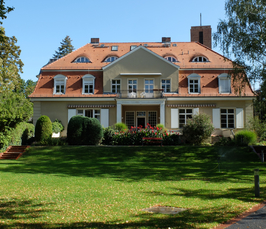Photochemistry and spectroscopy of molecules at surfaces – Insights (mostly) from ab initio molecular dynamics –
- TH Department Online Seminar
- Date: Apr 28, 2022
- Time: 04:00 PM (Local Time Germany)
- Speaker: Professor Peter Saalfrank
- Chemistry Department, University of Potsdam, Germany
- Location: https://zoom.us/j/93171979465?pwd=WUM0NEh6OHQyUUZtWUlFeGxVWGFvQT09
- Room: Meeting ID: 931 7197 9465 | Passcode: 690589
- Host: TH Department

First, we consider femtosecond laser (FL) pulse driven chemistry at metals, e.g., FL-induced, hot-electron mediated desorption, diffusion or reactions. We describe these processes by Langevin Ab Initio Molecular Dynamics with Electronic Friction (AIMDEF) based on Density Functional Theory (DFT), and random forces obtained from a two-temperature model. Our focus is on associative desorption of H2 and isotopomers from Ru(0001) and its “dynamical promotion” [1], as well as on desorption, diffusion, reactions and time-resolved vibrational response of CO on CO(O):Ru(0001) and CO:Cu(100) [2], respectively.
A second example illustrates how vibrational (IR and Sum Frequency Generation (SFG)) spectra of water-covered aluminum oxide surfaces can be determined with the help of auto- and cross-correlation functions computed from DFT-based AIMD [3].
Third, the step towards explicitly non-adiabatic surface dynamics is taken in the form of semiclassical, AM1/CI-based “surface hopping”. Specifically, we consider cis-trans isomeri-zations in densely packed or confined azobenzene molecules, and how they are influenced by excitonic and steric effects [4].
Finally, if time permits, a short outlook to “photochemistry without light” will be given, by analyzing with quantum mechanical models, the spectroscopy and simple “reactions” of molecules in cavities [5].
[1] G. Füchsel et al., PCCP 13,
8659 (2011); J.I. Iuaristi et al., Phys. Rev. B 95, 125439 (2017).
[2] R. Scholz et al., Phys. Rev. B 94, 165447 (2016); R.
Scholz et al., Phys. Rev. B 100, 245431 (2019).
[3] G. Melani et al., J. Chem.
Phys. 149, 014707 (2018); J. Chem. Phys. 150, 244701 (2019); PCCP
23, 7714 (2021).
[4] E. Titov et al., J. Phys. Chem. Lett. 7, 3591 (2016); ChemPhotoChem 5, 1 (2021).
[5] E. Fischer et al., J. Chem. Phys. 154, 104311 (2021); J. Chem. Phys. (2022), arXiv:2109.13574